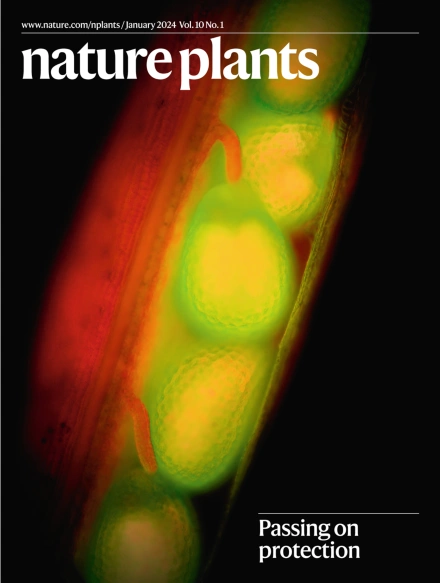Sporophyte-directed gametogenesis in Arabidopsis
IF 15.8
1区 生物学
Q1 PLANT SCIENCES
引用次数: 0
Abstract
Plants alternate between diploid sporophyte and haploid gametophyte generations1. In mosses, which retain features of ancestral land plants, the gametophyte is dominant and has an independent existence. However, in flowering plants the gametophyte has undergone evolutionary reduction to just a few cells enclosed within the sporophyte. The gametophyte is thought to retain genetic control of its development even after reduction2. Here we show that male gametophyte development in Arabidopsis, long considered to be autonomous, is also under genetic control of the sporophyte via a repressive mechanism that includes large-scale regulation of protein turnover. We identify an Arabidopsis gene SHUKR as an inhibitor of male gametic gene expression. SHUKR is unrelated to proteins of known function and acts sporophytically in meiosis to control gametophyte development by negatively regulating expression of a large set of genes specific to postmeiotic gametogenesis. This control emerged late in evolution as SHUKR homologues are found only in eudicots. We show that SHUKR is rapidly evolving under positive selection, suggesting that variation in control of protein turnover during male gametogenesis has played an important role in evolution within eudicots. Ancestral land plants had a free-living gametophyte, but in flowering plants the gametophyte develops within the sporophyte. This study shows that male gametophyte development in Arabidopsis is directed by the sporophyte through repression of gametogenesis genes.


拟南芥孢子体导向配子发生
植物在二倍体孢子体和单倍体配子体之间交替生长。在保留祖先陆地植物特征的苔藓中,配子体占主导地位,独立存在。然而,在开花植物中,配子体经过进化减少到孢子体内的几个细胞。配子体被认为即使在还原后也保留了对其发育的遗传控制。本研究表明,拟南芥雄性配子体的发育,长期以来被认为是自主的,也受到孢子体的遗传控制,其抑制机制包括大规模调节蛋白质的转换。我们鉴定了一个拟南芥基因SHUKR作为雄性配子基因表达的抑制剂。SHUKR与已知功能的蛋白质无关,在减数分裂过程中,通过负性调节减数分裂后配子体发生特异性基因的表达来控制配子体的发育。这种控制是在进化的后期出现的,因为SHUKR同源物只在异体中发现。我们发现SHUKR在正选择下快速进化,这表明雄性配子体发生过程中蛋白质周转控制的变化在雌雄同体的进化中发挥了重要作用。
本文章由计算机程序翻译,如有差异,请以英文原文为准。
求助全文
约1分钟内获得全文
求助全文
来源期刊

Nature Plants
PLANT SCIENCES-
CiteScore
25.30
自引率
2.20%
发文量
196
期刊介绍:
Nature Plants is an online-only, monthly journal publishing the best research on plants — from their evolution, development, metabolism and environmental interactions to their societal significance.
 求助内容:
求助内容: 应助结果提醒方式:
应助结果提醒方式:


